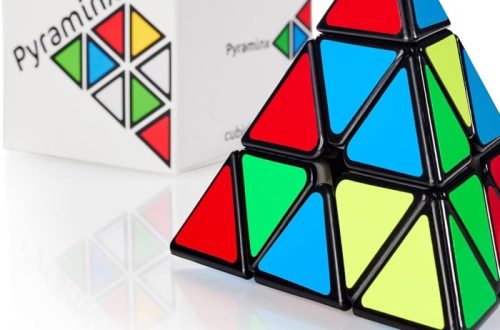Part 1: Introduction to Off-Roading with RC Cars
Mastering off-roading with your RC car can be a thrilling and rewarding experience for hobbyists. This article will provide valuable insights and tips to help enthusiasts enhance their off-road driving skills and navigate challenging terrains, ultimately enjoying a more fulfilling RC experience.
Part 2: Selecting the Right Off-Road RC Car
1. Consideration of Terrain
When selecting an off-road RC car, understanding the terrain you’ll primarily be driving on is crucial. Different terrains require specific vehicle characteristics to perform optimally.
- Rocky Terrain: For rocky terrain, a vehicle with a high ground clearance, long-travel suspension, and durable tires is ideal. These features allow the car to navigate over rocks and boulders without getting stuck.
- Sandy Terrain: Sandy terrain demands a vehicle with wide, low-pressure tires to provide maximum traction. A powerful motor is also essential for overcoming the resistance of the sand.
- Muddy Terrain: Muddy terrain can be challenging, as it can cause the tires to lose traction. A vehicle with aggressive tread patterns and a waterproof electronics package is ideal for muddy conditions.
- Mixed Terrain: If you plan to drive on a variety of terrains, a versatile vehicle with adjustable suspension and a wide range of tire options is recommended.

2. 4-Wheel Drive System
A 4-wheel drive system is a game-changer for off-road performance. It distributes power to all four wheels, providing superior traction and control, especially on challenging terrains.
Key Benefits of 4-Wheel Drive:
Improved Traction: 4-wheel drive ensures that power is delivered to all four wheels, maximizing traction and preventing wheel spin, especially on slippery surfaces.
Enhanced Climbing Ability: 4-wheel drive allows the vehicle to tackle steep inclines and challenging obstacles with ease.
Better Stability: By distributing power evenly to all four wheels, 4-wheel drive improves stability and reduces the risk of rollovers.
Increased Versatility: 4-wheel drive vehicles can handle a wider range of terrains, from rocky trails to muddy fields.
When mastering off-road driving, a 4-wheel drive RC car is a valuable tool. It allows you to explore challenging terrains, push your limits, and experience the thrill of off-road adventure.
Part 3: Upgrading Your RC Car for Off-Road Performance
1. Upgrading Tires
One of the most effective ways to improve an RC car’s off-road performance is by upgrading its tires. The right tires can dramatically enhance traction, grip, and overall handling on various terrains.
Aggressive Tread Patterns: Tires with aggressive tread patterns, such as knobby or block-style treads, provide excellent grip on loose surfaces like dirt, gravel, and mud. These patterns help to channel debris away from the tire, preventing slippage and maintaining traction.
Softer Compound: Softer tire compounds offer better grip and traction, especially on slippery surfaces. However, they may wear out faster than harder compounds. It’s important to find a balance between grip and durability.
By upgrading to high-quality off-road tires, you can significantly enhance your RC car’s performance and extend its capabilities.

2. Upgrading the Suspension System
A well-tuned suspension system is crucial for off-road driving. It absorbs shocks, maintains tire contact with the ground, and improves overall handling. Upgrading your RC car‘s suspension system can significantly enhance its off-road performance.
Adjustable Shocks: Adjustable shocks allow you to fine-tune the suspension to suit different terrains and driving styles. By adjusting the shock’s damping and spring rate, you can optimize the suspension for maximum performance.
Increased Ground Clearance: A higher ground clearance enables your RC car to navigate over obstacles and uneven terrain without getting stuck. By lifting the chassis, you can improve the vehicle’s approach and departure angles.
By upgrading your RC car’s suspension system, you can improve its stability, handling, and overall performance on off-road terrain.
Part 4: Mastering Off-Roading Techniques
1. Throttle Control: The Art of Precision
Mastering throttle control is a fundamental skill for off-road RC driving. It involves the ability to modulate the throttle input to maintain optimal traction and prevent wheel spin, particularly on loose or slippery surfaces. By carefully applying and releasing the throttle, you can navigate challenging terrains with precision and control.
Smooth Throttle Inputs: Avoid sudden, jerky movements of the throttle. Instead, apply smooth and gradual inputs to maintain traction and prevent wheel spin.
Feathering the Throttle: Feathering the throttle involves quickly alternating between applying and releasing the throttle to maintain momentum and control. This technique is particularly useful when climbing steep slopes or navigating technical sections.
Brake Control: Using the brake judiciously can help you slow down and maintain control, especially on downhill sections. Applying the brake gently and progressively can help prevent the vehicle from losing traction and sliding.
By practicing these techniques, you can develop the fine motor skills necessary to control your RC car with precision and finesse.

2. Choosing the Right Line: A Strategic Approach
Selecting the correct driving line is a crucial aspect of off-road driving. The choice of line can significantly impact the success of your run. A well-chosen line can help you avoid obstacles, maintain momentum, and minimize the risk of getting stuck.
Analyze the Terrain: Before attempting a challenging section, take a moment to assess the terrain. Identify the smoothest path, avoiding deep ruts, rocks, and other obstacles.
Plan Your Approach: Consider the angle of approach and departure, as well as the potential hazards along the way. A well-planned approach can help you navigate difficult sections with ease.
Adjust Your Line: If you encounter unexpected obstacles or challenging terrain, be prepared to adjust your line. Don’t hesitate to back up and try a different approach.
Part 5: Utilizing Advanced Driving Skills for Off-Roading
1. Power Sliding: A Controlled Drift
Power sliding, or drifting, is a technique where the rear wheels lose traction and slide sideways. While it may seem risky, controlled power slides can be a valuable tool for navigating tight corners and slippery surfaces. By understanding the principles of weight transfer and throttle control, you can execute smooth and controlled power slides.
Weight Transfer: Shifting the weight of the vehicle to the rear wheels can induce a power slide. This can be achieved by accelerating hard while turning the steering wheel.
Throttle Control: Once the rear wheels lose traction, carefully modulating the throttle is crucial. Applying the right amount of throttle can help maintain the slide and control the vehicle’s direction.
Steering Input: Steering input is essential for controlling the direction of the slide. By adjusting the steering angle, you can guide the vehicle through the turn.
While power sliding may seem intimidating, it’s a skill that can be mastered with practice. By understanding the underlying principles and practicing in a controlled environment, you can improve your off-road driving skills and tackle challenging terrains with confidence.

2. Weight Shifting: The Art of Balance
Weight shifting is a technique that involves manipulating the distribution of weight within the RC car to improve its performance on various terrains. By understanding and utilizing weight shifting techniques, you can overcome obstacles, maintain traction, and improve your overall driving skills.
Center of Gravity: The center of gravity (CG) is the point at which the weight of an object is concentrated. By adjusting the position of the battery or other heavy components, you can alter the CG of your RC car. A lower CG can improve stability and handling, while a higher CG can enhance agility and responsiveness.
Momentum: Using momentum to overcome obstacles is a common technique in off-road driving. By building up speed and using the vehicle’s momentum, you can climb steep hills, jump gaps, and navigate through challenging terrain.
Body English: Body English refers to the use of body movements to influence the vehicle’s direction. By leaning your body in a certain direction, you can subtly shift the weight of the vehicle and improve its handling.
By mastering the art of weight shifting, you can take your off-road driving skills to the next level. Experiment with different techniques and find what works best for your specific RC car and driving style.

Part 6: Conclusion
Mastering the art of off-road RC driving requires a comprehensive approach that encompasses vehicle selection, strategic upgrades, and advanced driving techniques. By carefully considering these factors, enthusiasts can unlock the full potential of their RC cars and conquer even the most challenging terrains.
Selecting the right off-road RC car is crucial. Factors like ground clearance, suspension travel, and tire choice play a significant role in determining a vehicle’s off-road capabilities. Upgrading key components, such as the motor, ESC, and battery, can significantly enhance performance and durability. Additionally, investing in high-quality off-road tires and a well-tuned suspension system can improve traction and handling.
Beyond vehicle preparation, mastering advanced driving techniques is essential. Developing skills like throttle control, braking, and weight transfer allows drivers to navigate obstacles with precision and finesse. By understanding the nuances of line choice, obstacle negotiation, and power sliding, enthusiasts can push their limits and achieve remarkable feats.



